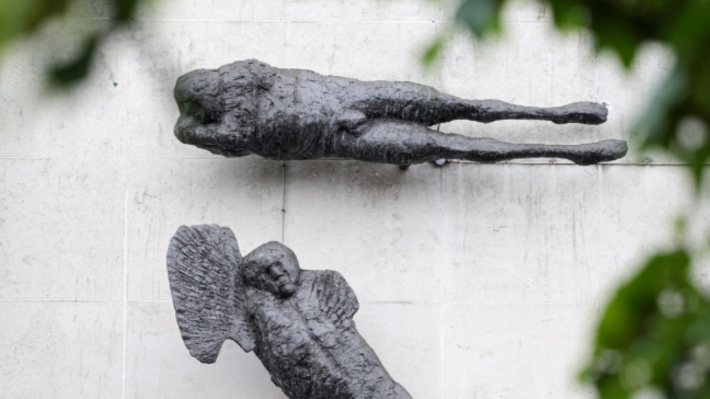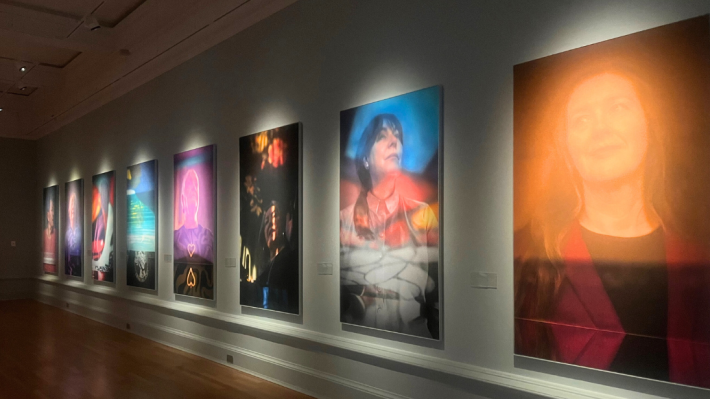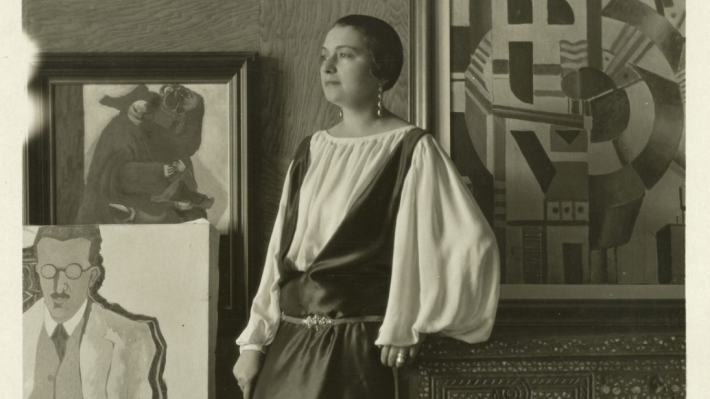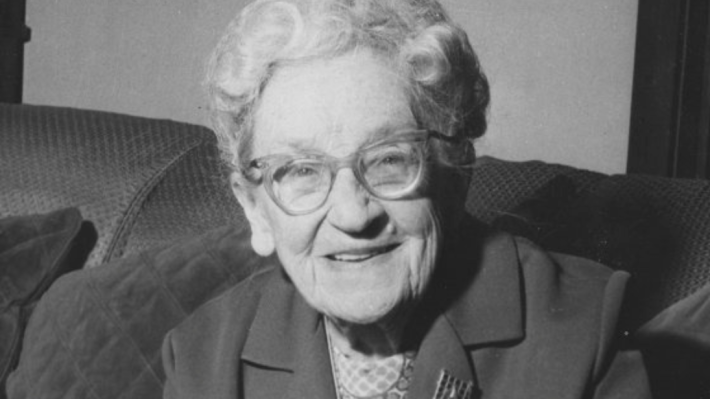
Celebrating Female Artists
A celebration of women artists from the Ulster Museum Art Collection.
Rita Duffy b.1959
Rita Duffy received her MA in Fine Art at the University of Ulster. Her work, in which she uses a range of media, is often autobiographical and addresses subjects relating to Irish identity, history and politics. She has also commented that ‘women’s issues and feminism seem obvious and important concerns for me as an artist’.

"Nuptial Grooming" is an autobiographical painting in which Duffy questions the traditional role and attributes of the bride. It was painted when she was artist-in-residence at the Ulster Museum.
Dame Barbara Hepworth 1903 – 1975
A pioneer of modernism, Barbara Hepworth was one of the most important sculptors of the 20th century. While her works were abstract they were often rooted in the natural landscape of her adoptive Cornwall, where she lived from 1939 until her death.

On a visit to Greece in 1955 Barbara Hepworth was enthralled by the ancient archaeological sites, including Mycenae, Epidauros and the Theatre and Temple of Apollo at Delphi. When she returned to England she made a series of sculptures including this one. These rank among her greatest wood carvings, expressing a sense of spatial enclosure, grandeur and proportional balance.
Emily Grace Henry 1868 – 1953

Emily Grace Mitchell was born in Peterhead near Aberdeen, the daughter of a Church of Scotland Minister. After travelling and studying art in France and Belgium, she married the Irish artist Paul Henry in 1903. They initially lived in London but moved to Achill Island after falling in love with the inspiring landscape on holiday. Whilst living there the two artists created a large body of work and often exhibited together. Following their separation Grace continued to travel and develop her painting throughout Ireland and the rest of Europe.
She was helpful in establishing the careers of other female Irish artists, such as Mainie Jellett, through her involvement in the founding of the Dublin Painters’ Society. It is thought that her career is not as well-known because of her separation from Paul Henry, who failed to even mention her in both of his autobiographies.
Evie Hone 1894 – 1955

Hone suffered from infantile paralysis when she was eleven and subsequently lived on the Continent on several occasions, these visits greatly influenced her practice. Before 1914 she studied at the Byam Shaw School of Art in London and then under Walter Sikert at the Westminster School of Art. Under the advice of Bernard Meninsky at the Central School of Art London she went to Paris where she met Mainie Jellett, commencing a long professional partnership.
In later life she was greatly influenced by medieval carving in Ireland, inspiring the stained glass work she is most known for.
Mary Martin 1907 – 1969
Mary Martin was one of the most influential constructivist artists of her generation in England. In much of her work, she took her inspiration from the idea of things - usually natural elements - dispersing or moving away from a central point. The feeling of a gentle fall, like an autumnal leaf floating to the ground, evident here is typical of her exploration of such natural phenomena. Often, as here, she made use of half-cubes, each with a reflecting hypotenuse, to build what she termed 'super-patterns' of shapes dispersed apparently at random upon the picture plane.

Explaining her technique she once wrote: 'As with all works based on the constructing process the result is unforeseen. The process is nuclear ... that is to say that one commences with a single cell, or unit, a logical process of growth is applied and, as with kinetic and optical art, which are branches of construction, the whole, or the effect, is unforeseen until the work is complete'.
Sophia Rosamond Praeger 1867 – 1954
Sophia Rosamund Praeger was born in Holywood County Down in 1867. She established her studio in her hometown after returning from study at the Slade in London under Alphonse Legros, where she was awarded for her work with clay. Though sculpture was her main medium throughout her career, with much of her work found on public display throughout Ireland, she had a successful career as a book illustrator and was a prominent member of the Belfast Art Society, Royal Hibernian Society and the Ulster Academy of Arts.

This marble sculpture is considered her most renowned work. The subject matter, the innocence of childhood, was typical of her oeuvre. Another is owned by the Royal Victoria Children’s Hospital, an illustration of which was the emblem of the hospital for a time.
Mainie Jellett 1897 – 1944
Mainie Jellett was one of the most important Irish painters of the 20th Century. Born in Dublin, she took art lessons at home as a child from Elizabeth Yeats and Sarah Cecilia Harrison. She then attended the Dublin Metropolitan School of Art. Following her studies she travelled to Paris with fellow artist Evie Hone where both studied under Andre Lhote. Her experiences there greatly influenced her work and led to her introducing modernist abstract painting to Ireland. She is often credited as being Ireland’s first and best Cubist painter.

Jellett had many achievements throughout her career including representing Ireland at the 1939 New York World Fair and exhibiting in the first White Stag Group show in 1940. She was also Chairperson of the committee that established the Irish Exhibition of Living Art, which was a yearly celebration of Irish abstract expressionism and avant-garde painting that ran for over thirty years



